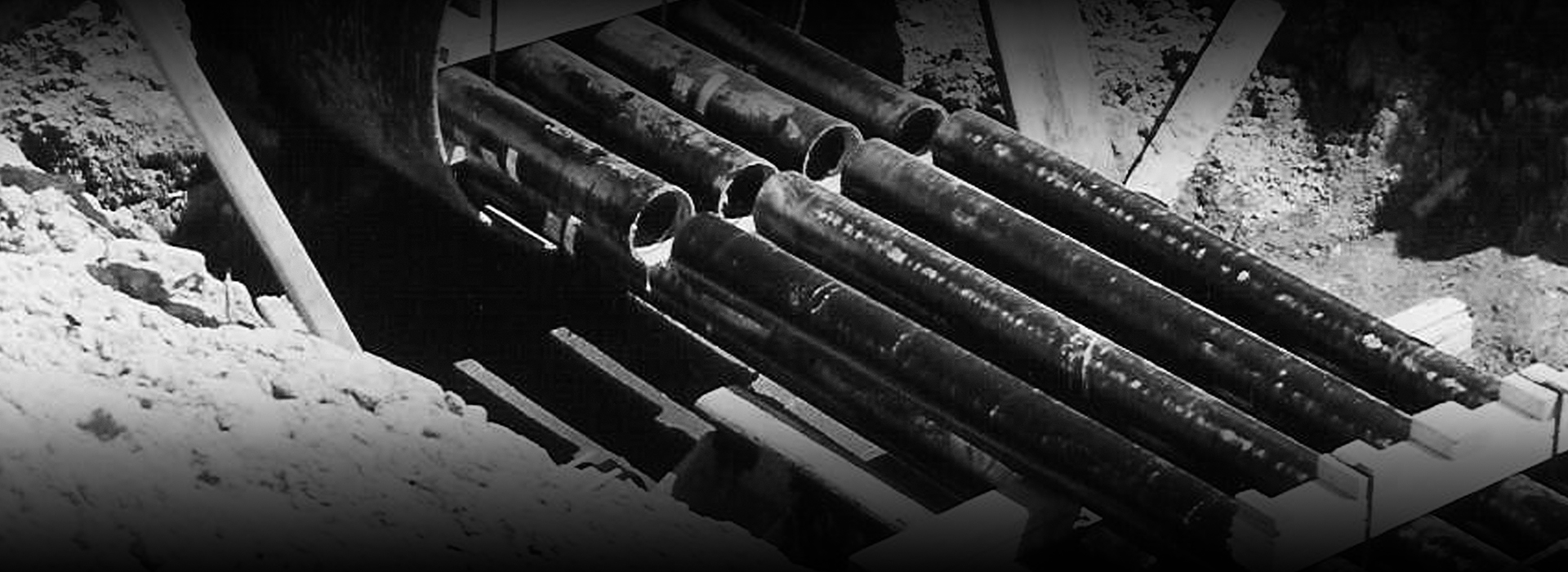QUEL TYPE DE CONDUIT FAUT-IL UTILISER POUR LES APPLICATIONS SOUTERRAINES?
Les conduits sont principalement utilisés à des fins de protection, afin d'éliminer les risques d'accident évitables tels que les courts-circuits, les incendies et les électrocutions. De plus, les conduits regroupent les fils, les isolant des autres circuits, ce qui facilite grandement la maintenance.
Mais quel type de conduit convient le mieux à votre projet? C'est une question que se posent de nombreux chefs de projet, et avec la multitude de types de conduits disponibles, il peut être difficile de faire le bon choix.
Pour les chefs de projet qui supervisent un projet de conduites souterraines, il est particulièrement important de prendre la bonne décision. Heureusement, il existe toute une gamme de conduits, des plus traditionnels aux dernières innovations.

Conduits traditionnels en PVC et en métal
Les conduits sont disponibles dans un large éventail de modèles et de matériaux, chacun étant adapté à un budget et à un type de projet particuliers. Vous trouverez ci-dessous plusieurs options traditionnelles pour les conduits souterrains:
- Conduit en PVC : l'un des matériaux de conduit les moins chers et les plus légers. Il est principalement utilisé pour les applications hors sol, car il peut supporter différentes conditions climatiques et résister à l'humidité et aux substances corrosives. Les conduits en PVC sont accompagnés de leur propre jeu de coudes, de connecteurs, de raccords et d'accessoires.
- Conduit métallique rigide (CMR) : il s'agit d'un conduit épais et lourd généralement fabriqué en acier revêtu, en acier inoxydable ou en aluminium. Le CMR est extrêmement solide, ce qui en fait un choix judicieux pour les zones extrêmement hostiles. Cela dit, son poids rend son installation difficile et, par conséquent, cette solution est plus coûteuse que d'autres options.
- Tubes électriques métalliques (TEM) : il s'agit d'un matériau léger et pliable qui est généralement utilisé pour les conduits dans les murs. En raison de sa légèreté, il peut être endommagé facilement et n'est pas l'option privilégiée pour les travaux souterrains, compte tenu des conditions climatiques hostiles.
- Conduit métallique flexible (CMF) : il est fabriqué par enroulement hélicoïdal de bandes d'aluminium ou d'acier emboîtées. Le tube peut être traversé par un câble et peut être plié selon les besoins. Ce type de conduit est le mieux utilisé dans les espaces étroits avec des coudes serrés.
Inconvénients des options traditionnelles
- Le PVC ne peut pas supporter des températures inférieures à -5°C ou supérieures à 60°C.
- Le PVC émet des fumées toxiques lorsqu'il fond ou qu'il brûle.
- Les raccords du CMR sont filetés, ce qui rend l'installation du câblage plus difficile.
- Le CMR et le CMF ont des parois épaisses qui rendent l'installation plus laborieuse et plus coûteuse.
- Le TEM ne peut être utilisé que dans des projets où il ne subira pas de dommages physiques importants.
- Le TEM est plus difficile à couper et à plier.
- Le processus de recherche de défauts est plus ardu.
Conduit en fibre de verre pour applications souterraines
Lorsque les options traditionnelles ne conviennent pas à votre projet, le conduit en fibre de verre pour les applications souterraines est un conduit innovant souvent choisi pour ses avantages uniques.
Plus léger que les conduits métalliques traditionnels, le conduit en fibre de verre peut être utilisé dans une variété d'applications intérieures et extérieures. Par rapport au PVC, à l'acier et à l'aluminium, les conduits en fibre de verre offrent un niveau de protection supérieur et une installation plus économique. Ce matériau est une solution de rechange économique et durable aux matériaux lourds et coûteux comme l'acier revêtu de PVC et l'acier galvanisé rigide.
Le système de conduits souterrains en fibre de verre est le choix préféré dans le monde entier pour les entreprises d'électricité et de télécommunications, ainsi que pour les clients commerciaux et industriels.
Chez FRE Composites, nos conduits souterrains en fibre de verre conviennent à la pose en pleine terre et la pose enrobée. Ils sont disponibles dans des diamètres de 19 mm à 203 mm (3/4 po à 8 po) et sont fournis avec des raccords et des adaptateurs.
Avantages des conduits en fibre de verre
- Faible coefficient de friction : permet de faire passer les câbles sans les endommager.
- Résistant à la corrosion et aux produits chimiques : résistant à la dégradation par les UV, l'humidité, les solvants et les produits chimiques.
- Protection tout au long de l'année : ne se fissure pas aux basses températures de l'hiver et ne se dilate pas pendant les vagues de chaleur.
- Résistance supérieure à l'impact et à l'écrasement : conserve sa forme après compression ou impact.
- Non-conducteur
- Léger : rend l'installation rapide et facile.
- Faibles coûts d'installation.
Systèmes de conduits phénoliques
En raison de leur matrice à base de résine phénolique, les systèmes de conduits phénoliques sont un matériau non métallique résistant à la corrosion, à la flamme, à la fumée et non toxique.
Puisque le conduit est non métallique, il ne rouille pas ni ne se corrode. Les caractéristiques de ce conduit le rendent particulièrement adapté aux installations à haute température telles que les tunnels, les métros et les autres zones souterraines confinées.
Nos produits BreathSaverMD sont principalement utilisés pour les installations hors sol où la propagation des flammes et le développement de la fumée sont des préoccupations courantes, mais ils sont également bien adaptés aux installations souterraines.
Nous sommes fiers d'être le seul fabricant à proposer ce système de conduit innovant, certifié UL 2196, ayant une résistance au feu de 2 heures, à la fois verticalement et horizontalement (BreathSaverMD XW - selon FHIT 25C).
Si vous avez un projet de conduit extérieur et que vous ne savez pas quel matériau est le mieux adapté, contactez FRE Composites.. Nos experts prendront en compte l'exposition à l'eau, la compression, la température et l'emplacement pour prendre une décision éclairée en fonction de vos besoins.